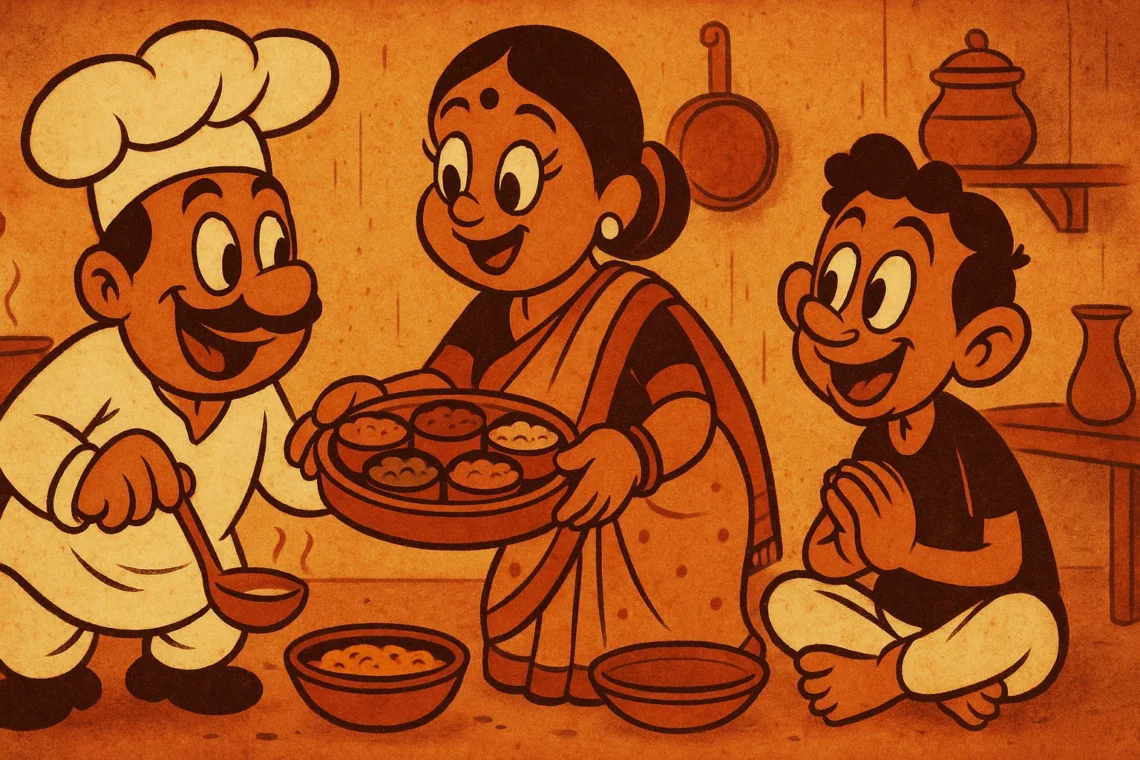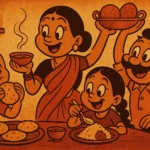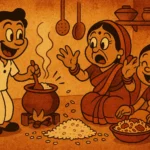In every Indian kitchen, there’s a single object that quietly holds together not just flavor, but memory, lineage, and logic. It doesn’t beep or buzz. It doesn’t take up much space. But open its lid, and you’re immediately surrounded by the smell of history. The masala dabba—round, metal, and lined with tiny cups of powdered potency—isn’t just a spice box. It’s an archive. Of taste. Of time. Of the unspoken rules that govern a kitchen passed down across generations.
Our masala dabba lived on the second shelf, always within reach but never in plain sight. It was the kind of object you handled with intention. You didn’t take it out to “check” something. You opened it only when you were ready to cook. And when you did, the air changed. A whisper of hing. The warmth of haldi. The dusty fire of red chili powder. The almost sweet scent of dhaniya. Each section had its place. Each section had its guardian spice. And nothing ever moved out of order.
The Internal Logic of Flavor
The arrangement wasn’t random. Even though no one ever drew a diagram, each family’s masala dabba followed its own logic. In ours, the center cup held haldi—because turmeric came first. Before the onions browned, before the tomatoes softened, haldi was added. It was our culinary opening note. To its right: jeera. To its left: red chili. Hing at the far end. The top three most dangerous spices—mustard seeds, methi, and garam masala—were kept in smaller jars, outside the dabba, like wild cards not to be trusted unsupervised.
And yet, everything you needed for 90% of Indian cooking was inside that steel circle. No labels. No confusion. Your fingers learned the measurements before your brain did. A pinch of this, half a spoon of that, the famous “andaz se” method honed entirely by watching your mother’s wrist movements. Recipes weren’t followed. They were recalled from memory, and the masala dabba was the memory palace.
What It Really Stores
Beyond the spices, the masala dabba stored something else—trust. You didn’t refill it unless you were trusted with proportions. You didn’t shake it. You didn’t leave the lid open. If you accidentally mixed up the red chili and the kashmiri mirch, you were quietly blacklisted from dabba duties for a month. Because this wasn’t just a container. It was a system. A kitchen’s muscle memory. An emotional artifact hiding in plain sight.
Even the box itself was chosen with care. Ours was stainless steel, heavy, and circular—classic. But others had glass lids, copper bodies, or came wrapped in plastic when given as wedding gifts. Over the years, the dabba aged. The edges darkened. The turmeric section refused to be fully clean. The spoons got swapped for smaller ones, then for nothing at all. But it stayed. Through every dish, every festival, every new experiment that still began the same way: “Get the masala dabba.”
Migration and Masala
When I moved to Austin, I packed many things I thought I’d need—chargers, towels, too many notebooks. But it was my mother’s mini masala dabba that made the kitchen feel like mine. I didn’t even open it for a week. Just seeing it on the counter, slightly smudged, smelling faintly of cloves, made the apartment feel less like a rental and more like a continuation. Like something old had traveled with me and said, “Let’s start again.”
Eventually, I did open it. Refilled the haldi. Swapped the red chili for one I found at the Indian store. Added my own touch—smoked paprika, for a new dish I was trying. And just like that, the archive updated itself. Still familiar, still circular, but a little more mine. A little more today.
The Box That Remembers Everything
The masala dabba doesn’t forget. It remembers how your grandmother used only two spices and still made magic. It remembers your mother’s habit of always wiping the rim of the container with her sari. It remembers the time you accidentally used garam masala instead of jeera and ruined the entire dal. It remembers every time you reached for it not with a plan, but with hope.
It’s not flashy. It doesn’t take up much space. But the masala dabba sits at the very center of the kitchen—and by extension, the home. Not just a spice box. A flavor archive. A quiet, circular reminder that history doesn’t have to be loud. Sometimes, it just smells like coriander.
Born in Mumbai, now stir-frying feelings in Texas. Writes about food, memory, and the messy magic in between — mostly to stay hungry, sometimes just to stay sane.












